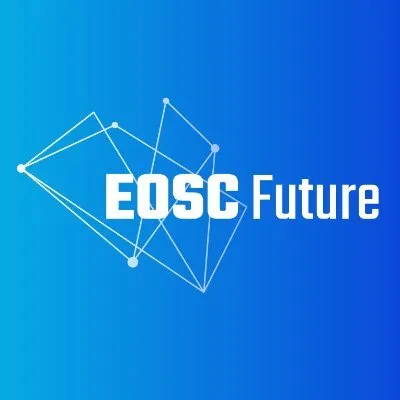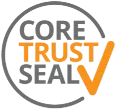The Digital Repository of Ireland (DRI) is a trusted digital repository (TDR), which provides reliable long-term preservation and access to Ireland’s humanities, cultural heritage, and social sciences digital data. DRI is also a research performing organisation engaged in a rich range of digital preservation-related research projects. In this new blog series, we invite you to get to know our research projects!
In the third blog in the ‘Get to Know Our Research Projects’ series, DRI Senior Programme and Communications Manager Áine Madden interviews Project Manager, Research Data Beth Knazook about the Horizon Europe-funded EOSC Future project.
Áine: Hi Beth, thank you for talking to me today about the EOSC Future project. Can you tell me more about this project and its aims?
Beth: Thanks for the invitation to chat about the project Áine. I think I’ll start with the ‘EOSC Future in a nutshell’ version of the explanation or we’ll be here all day! It’s an EU-funded Horizon 2020 project designed to give European researchers access to a wide web of FAIR (findable, accessible, interoperable, and reusable) data and related services through the implementation of the European Open Science Cloud (EOSC). It’s an ambitious project, with both technical and social goals, which recognises that developing EOSC requires an understanding and targeted response to the wide range of potential contributors and users. DRI is participating in tasks being led by the Research Data Alliance (RDA) which are more focused on the social side of the implementation. Our aim is to help EOSC become more receptive to the needs of various domain-specific research communities as stakeholders in EOSC, in particular seeking insight into the challenges facing researchers in disciplines which are not as well-supported or engaged in the pursuit of Open Science.
Áine: DRI’s role in this project is to widen access to the European Open Science Cloud (EOSC) in underrepresented communities. Can you tell us about the advantages of engaging with EOSC and the barriers to participation faced by underrepresented communities?
Beth: I’ll start with the latter, because I think it’s easier to see the potential advantages if you first understand the problems. Many of the critical barriers to engagement with EOSC that emerged in the consultations with disciplinary representatives were the result of a lack of understanding of data management best practices (including how to comply with the FAIR principles) and uncertainty about the value-add of data sharing in practical terms for their research as well as their careers. A lack of data stewardship support or a weak culture of collaboration was often perceived to accompany these barriers. Data sharing has not been a part of all research cultures historically and that means many researchers who have not been trained to do this kind of work are also now required to include a lot of additional steps in their usual research practice, from preparing a data management plan to applying metadata standards to the data underlying their publications while only being rewarded for the latter.
The advantages, as you might guess from above, were found in fields where data stewardship was embedded in research culture, reducing the effort required. They also emerged in instances where researchers had aligned on specific FAIR-enabling tools (especially those made available in EOSC) and were more easily able to share well-described data presented in easily exchanged file formats, organised using agreed-upon metadata standards and licences. Researchers that engage in collaborative data sharing see how this enhances the visibility of their work, especially in circumstances where traditional publication options might be more limited to language-specific or regional publishing options.
Researchers that engage in collaborative data sharing see how this enhances the visibility of their work, especially in circumstances where traditional publication options might be more limited to language-specific or regional publishing options.
Project Manager Research Data, Beth Knazook
As it became clear to us over the course of the project, we also saw that these barriers and advantages might differ depending on sub-discipline or cross-disciplinary research area, geographical location, language, and even the size or variety of the data required for a given research inquiry. It’s not possible to prescribe a one-size-fits-all workflow and toolkit for a field like Linguistics, for instance, which relies on ‘documentary data (e.g., text, audio, video), grammaticality judgements, instrumental data (e.g., eye tracking, EEG measurements, spectrograms), experimental data, derived data (e.g., transcriptions, annotations, syntactic treebanks), metadata, lexical data (e.g., dictionaries), language catalogues, computational data, and interview data’ (RDA and Linguistics). On the other hand, highly coordinated fields like Microbial Ecology have had a lot of success sharing data because of a general consensus around specialised software and domain-specific repositories, but then problems still arise from rapid technological change, which affects the comparability of analysed data as well as the costs of storing and producing ‘big data’. Researchers with poorer access to funding might be less eager to share data right away, instead trying to maximise their cost-per-publication by reusing their own data first.
These kinds of issues have highlighted the importance of tailoring services and resources to the local research culture as well as the broader disciplinary needs, and my personal takeaway is that it very much reinforces the importance of the Domain Ambassador Open Calls that were organised by my RDA colleagues for this project. As the funded ambassadorships come to a close, I’m working with Dr. Sara El-Gebali and Dr. Allyson Lister to launch an Interest Group within the RDA to provide space and support for them to continue to build on what they’ve learned in the project.
Áine: What efforts did DRI make to help to increase engagement with EOSC in underrepresented communities?
Beth: A lot of our work went into interviews, focus groups, a survey of the RDA membership and user experience sessions on the EOSC Portal that fed back into the project, but we did develop a series of public-facing disciplinary info sheets that are now available on the RDA website. You can see an example of one on the RDA for Linguistics page, and the Chemistry page I’ve shared an image of below, but there are quite a few more on the different RDA for Disciplines pages. These sheets offer a high-level overview of data sharing in various fields as well as recommended resources for researchers looking to get started. We also highlighted the key barriers and potential value of EOSC for these fields from the perspective of the Domain Ambassadors we interviewed.

Images of an information sheet for Chemistry researchers prepared for the EOSC Future project. Download Disciplinary Info Sheet (PDF, 188.11 KB) from the RDA website.
Áine: As part of this project, a report is being developed to refine and clarify the information previously gathered from a variety of data sources that support community-building in Open Science. Can you tell us more about the findings of this report?
Beth: It was a bit of a struggle to take all the interviews and consultations that were designed to be specific to certain fields of research, and then zoom out to look for common themes that could be actioned by EOSC as well as the RDA. When I did start looking at the social factors for disciplinary success that could be pulled from the interviews, a few interesting things did emerge however. Disciplinary representatives from communities that were flagged as being earlier in their Open Science journeys all identified a lack of required academic training in Open Science and low levels of collaboration as significant issues. The latter point became really interesting when I started asking people about their perceptions of EOSC, and specifically the EOSC Portal. The picture of EOSC that emerged was this ‘collaboration hub’ which would not only provide access to data, tools and publications, but also prospective collaborators both within and external to their fields of research, such as citizen scientists, journalists, educators, industry, policy makers and the general public. I think it’s really telling that they are all imagining EOSC as the collaboration space that many of them are aware they need. I think what is clear is that EOSC can play a very important role in giving researchers the workflows, tools and services tailored to their local contexts, while also helping them to look beyond those local contexts for support.
Áine: Thank you, Beth, for taking the time to speak to me today about the EOSC Future project.
Beth: Thanks Áine!
Find out more about DRI’s research projects on our projects page.




